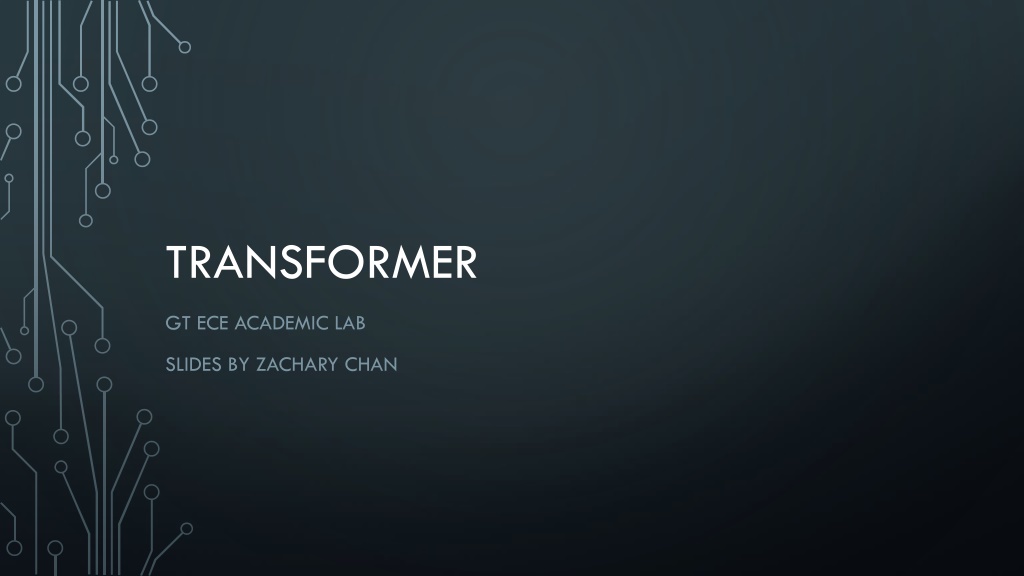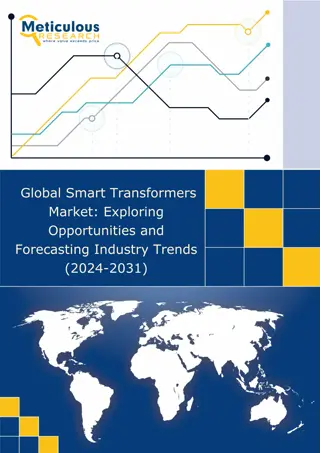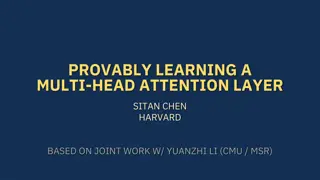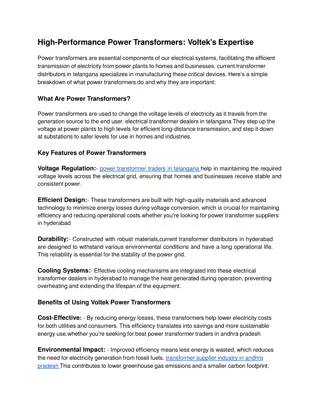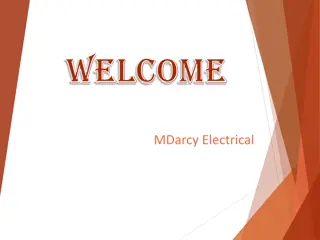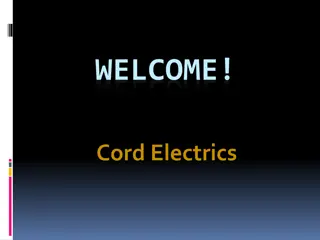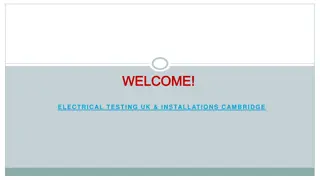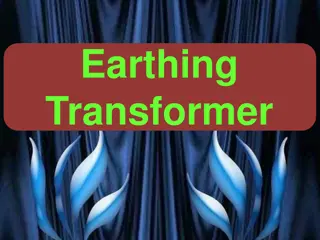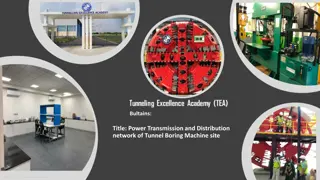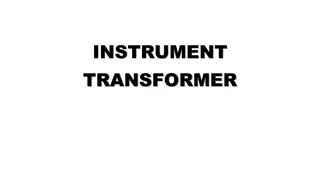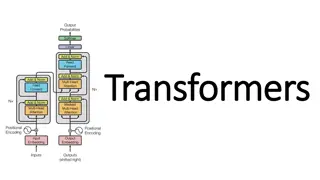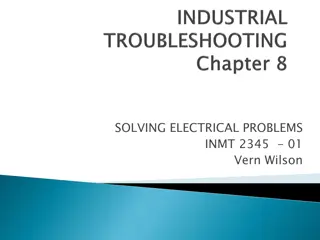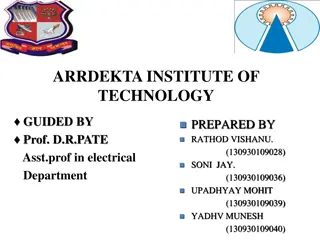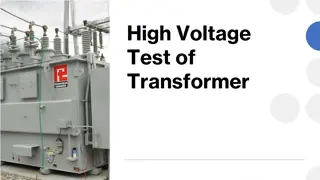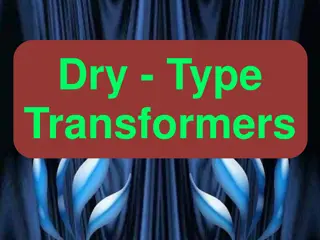Understanding Transformers in Electrical Engineering
AC generators, step-up vs. step-down transformers, efficiency considerations, applications in power stations, and three-phase power configurations are explored in this academic presentation by Zachary Chan. Learn about the principles behind transformers, their role in voltage transmission and distribution, and the benefits of three-phase transformer setups.
Download Presentation

Please find below an Image/Link to download the presentation.
The content on the website is provided AS IS for your information and personal use only. It may not be sold, licensed, or shared on other websites without obtaining consent from the author. Download presentation by click this link. If you encounter any issues during the download, it is possible that the publisher has removed the file from their server.
E N D
Presentation Transcript
TRANSFORMER GT ECE ACADEMIC LAB SLIDES BY ZACHARY CHAN
OVERVIEW An AC generator creates current through a primary coil of wire wrapped around an iron core and a secondary coil is wrapped around the same iron core The alternating current in the first coil generates a magnetic field with changing direction and magnitude which induces an alternating current in the secondary coil
STEP UP VS STEP DOWN Step up transformers increase the voltage More coil windings on the primary coil (wire from the generator) and less coil windings on the secondary coil (wire going to the load) Step down transformers decrease the voltage Less coil windings on the primary coil (wire from the generator) and more coil windings on the secondary coil (wire going to the load) N1/N2 = V1/V2 1 denotes the primary coil and 2 denotes the secondary coil N is the number of coil windings and V is the Voltage
EFFICIENCY Some energy is lost in the iron core as the magnetic molecules in the iron heat up and cause power loss The core is not completely solid It is made up of multiple sheets attached together to improve efficiency Some energy is lost in the copper proportional to I^2R Represent the greatest loss of a transformer Current heats up the copper wire and some energy is lost
APPLICATION Powerstations use transformers to step up the voltage of alternating current to distribute it because AC is easier to step up and step down voltage than DC After being stepped up for transmission and distribution, the voltage is stepped down to be safely used in homes Stepping down the voltage decreases the current and therefore makes transmission more efficient
THREE PHASE POWER Transformers can be combined to make 3 phase transformers which reduced costs and size The primary and secondary coils are connected in various configuration combinations, each with their own advantages Common configurations are star-star, delta-delta, delta-star and star-delta
